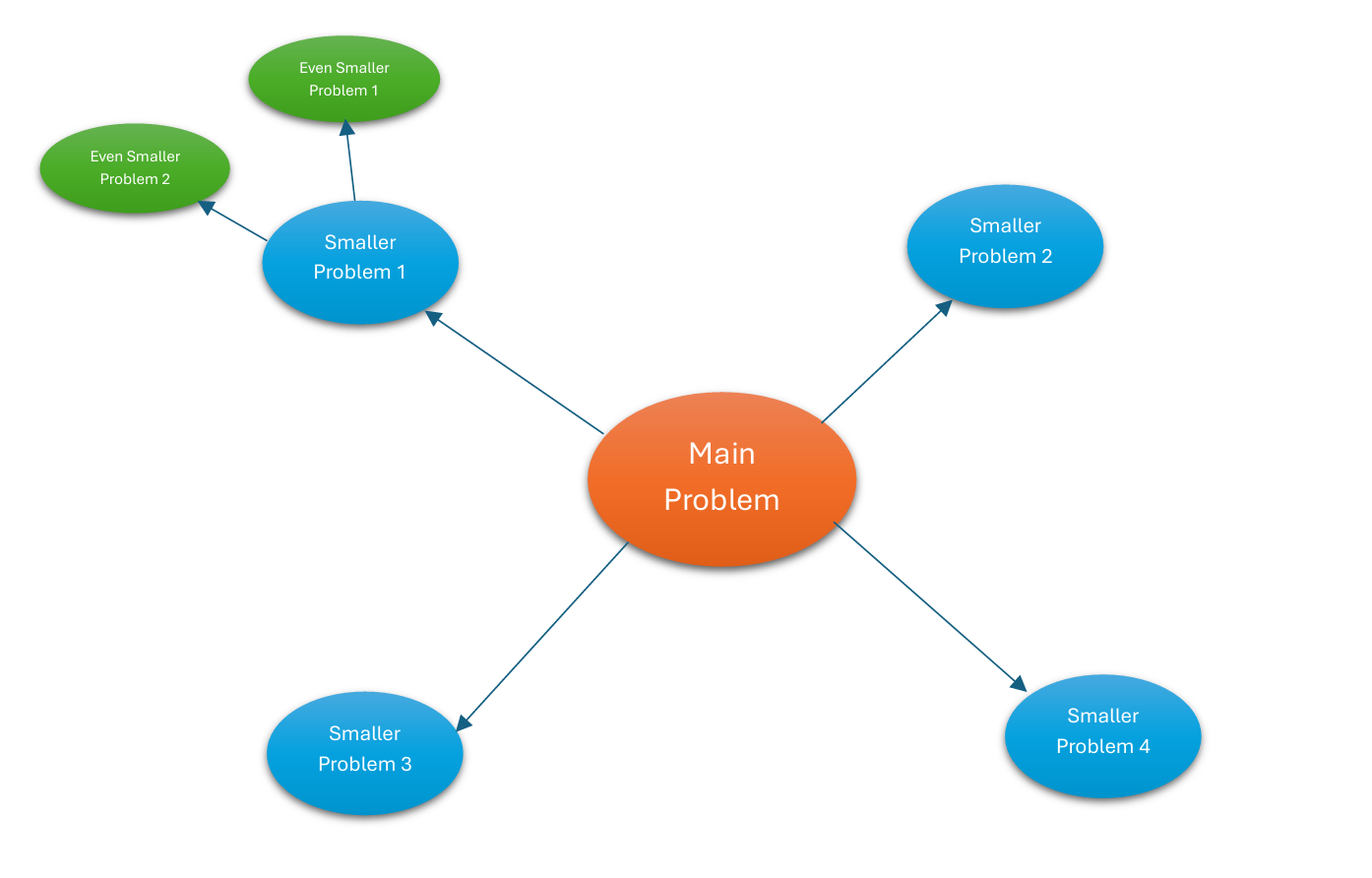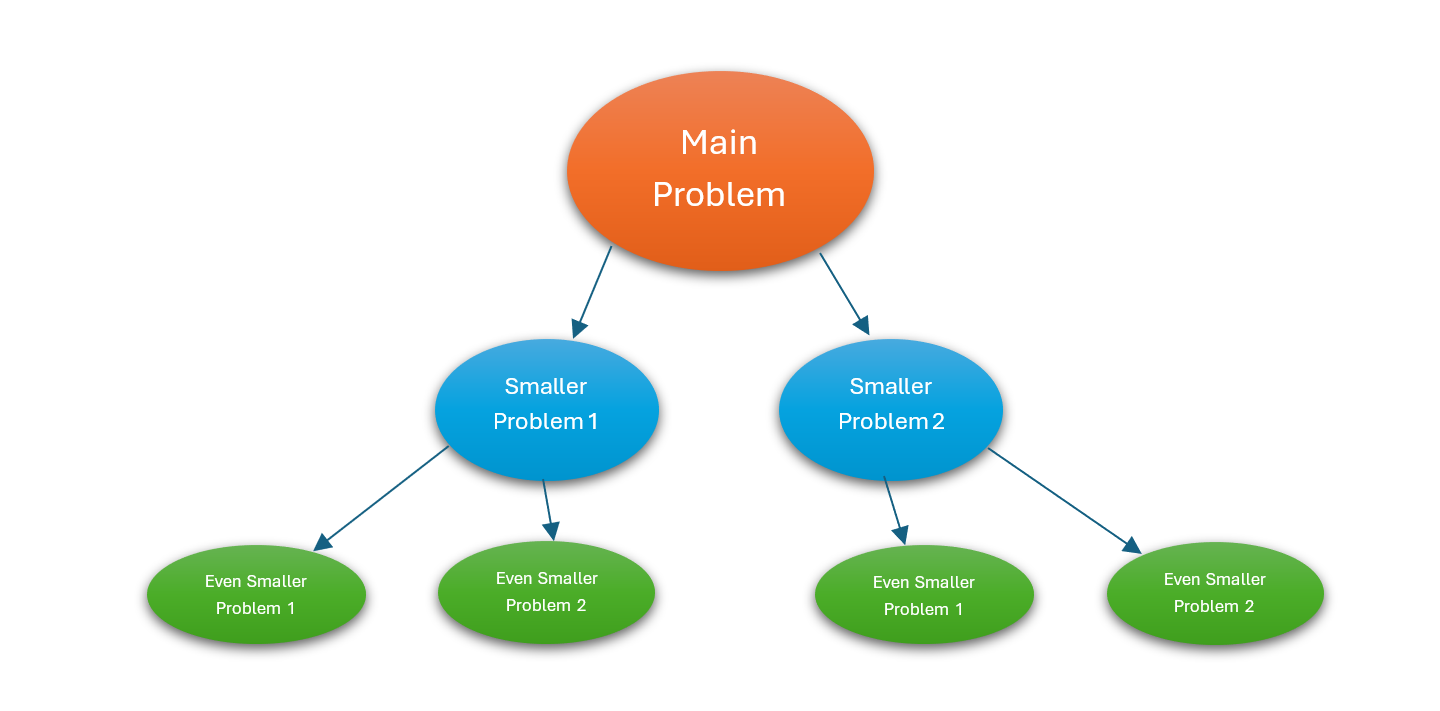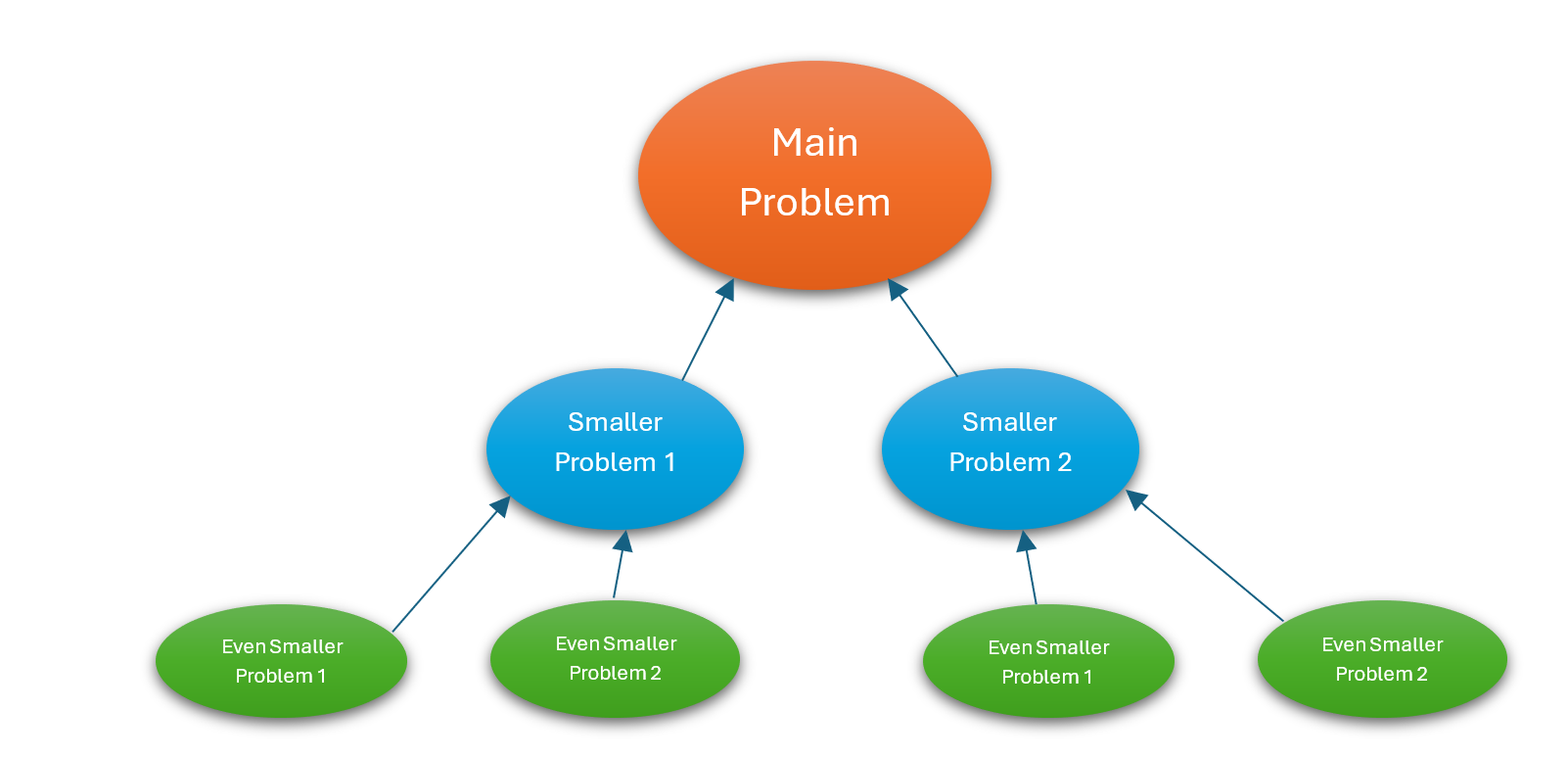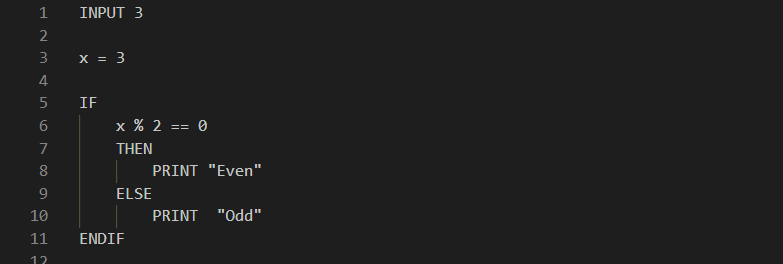We will learn the fundimental skills and methods of analysing a problem and working out a solution.
-
Computational thinking:
Using Modularisation, Top-Down and Bottom-Up approaches to solve a problem
Decomposition of problems
Abstraction of problems
Pattern Recognition
-
Algorithms
Purpose of an algorithm
Flowcharts
Pseudocode
Written Descriptions
Extra Information
Computational thinking is a problem-solving and cognitive skill set that involves approaching complex problems in a way that a computer, or a human with a computational mindset, might tackle them.
Key components of computational thinking include:
By applying computational thinking to an overarching problem, you can understand what the problem is and what it consists of.
Modularisation
the APPROACH of breaking down a complex problem into smaller, more manageable "modules" or components.
This approach enables a comprehensive understanding of the problem's requirements, facilitates the identification of patterns, and allows for the reuse and implementation of existing solutions.
All of these modules work together to provide a solution to the initial problem, this strategy is often used in object oriented programming.

Using Modularisation will allow you to Use Two Techniques, Top-Down and Bottom-Up approach.
The top-down approach is a problem-solving or design strategy where you
start by understanding the overall system or problem and then break it
own into smaller, more manageable components or sub-problems.
It involves decomposing a complex system or task into simpler and more understandable parts,
and then addressing each part in a systematic way.

The bottom-up approach is a problem-solving or design strategy where you start by understanding the smallest details or components of a system and then gradually build your way up to the overall solution. Instead of starting with a broadverview, you begin with the specifics and then integrate them into a larger framework

Decomposition
This is the technique of breaking a complex problem or system into smaller, more manageable parts.
These parts, often referred to as modules, can be developed independently and then integrated to form a complete solution.
By using decomposition, complex problems become easier to solve, as each module addresses a specific part of the overall problem.
Abstraction
This is the approach of analyzing a problem and then removing all unimportant or low-priority parts to focus only on the essential aspects. This process helps in managing complexity by highlighting the crucial elements and ignoring the irrelevant details.
Pattern recognition
This involves identifying and analyzing recurring themes, features, or regularities in data or processes. When a problem is broken down into smaller, manageable modules, it often becomes easier to spot these patterns. Recognizing patterns can be crucial for problem-solving, as it allows for more efficient and effective solutions.
When designing a solution we need to consider how we are going to take action to get the job done, One way of doing this is by using algorithmic thinking.
An algorithm is a well-defined set of step-by-step instructions designed to solve a specific problem. It acts as a blueprint for your solution, guiding you through the process and helping you understand the necessary actions.
Benefits of Algorithms:
How Algorithmis are communicated:
Flowcharts:
Visual diagrams that represent the sequence of steps in an algorithm, using symbols to denote different types of actions and decisions.
Written Descriptions:
Detailed, step-by-step written explanations of the algorithm, often used to communicate the logic in a human-readable format.
Pseudocode:
A high-level description of the algorithm using a notation resembling programming languages. Pseudocode is used to plan and discuss algorithms before actual coding.



